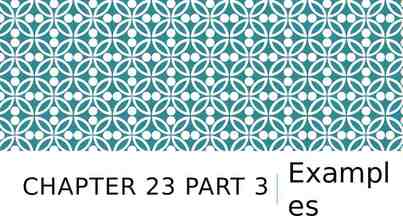This slide set “Hand Hygiene in Healthcare SettingsSupplemental”
42 Slides1.09 MB
This slide set “Hand Hygiene in Healthcare SettingsSupplemental” provides: 1) Slides that may be used in conjunction with the “Hand Hygiene in Healthcare Settings-Core” slide set. 2) Question and answer slides to be used in an interactive presentation. 3) Slides containing information on topics related to hand hygiene (e.g., antimicrobial resistance). 4) Slides that you can customize by inserting data specific to your hospital. The Hand Hygiene in Healthcare Settings-Supplemental slide set was developed in conjunction with the Chicago Antimicrobial Resistance Project [www.carp-net.org].
Ignaz Semmelweis, 1815-1865 1840’s: General Hospital of Vienna Divided into two clinics, alternating admissions every 24 hours: – First Clinic: Doctors and medical students – Second Clinic: Midwives 16 Maternal mortality, 1842 14 12 10 8 6 4 2 0 First Clinic Second Clinic
The Intervention: Hand scrub with chlorinated lime solution Hand hygiene basin at the Lying-In Women’s Hospital in Vienna, 1847.
Hand Hygiene: Not a New Concept Maternal Mortality (%) Maternal Mortality due to Postpartum Infection General Hospital, Vienna, Austria, 1841-1850 Semmelweis’ Hand Hygiene Intervention 18 16 14 12 10 8 6 4 2 0 1841 1842 1843 1844 1845 MDs 1946 1847 1848 1849 1850 Midwives Hand antisepsis reduces the frequency of patient infections Adapted from: Hosp Epidemiol Infect Control, 2nd Edition, 1999.
Colonized or Infected: What is the Difference? People who carry bacteria without evidence of infection (fever, increased white blood cell count) are colonized If an infection develops, it is usually from bacteria that colonize patients Bacteria that colonize patients can be transmitted from one patient to another by the hands of healthcare workers Bacteria can be transmitted even if the patient is not infected
The Iceberg Effect Infected Colonized
Recovery of VRE from Hands and Environmental Surfaces Up to 41% of healthcare worker’s hands sampled (after patient care and before hand hygiene) were positive for VRE1 VRE were recovered from a number of environmental surfaces in patient rooms VRE survived on a countertop for up to 7 days2 1 Hayden MK, Clin Infect Diseases 2000;31:1058-1065. 2 Noskin G, Infect Control and Hosp Epidemi 1995;16:577-581.
The Inanimate Environment Can Facilitate Transmission X represents VRE culture positive sites Contaminated surfaces increase cross-transmission Abstract: The Risk of Hand and Glove Contamination after Contact with a VRE ( ) Patient Environment. Hayden M, ICAAC, 2001, Chicago, IL.
What is the single most important reason for healthcare workers to practice good hand hygiene? 1. To remove visible soiling from hands 2. To prevent transfer of bacteria from the home to the hospital 3. To prevent transfer of bacteria from the hospital to the home 4. To prevent infections that patients acquire in the hospital
What is the single most important reason for healthcare workers to practice good hand hygiene? 1. To remove visible soiling from hands 2. To prevent transfer of bacteria from the home to the hospital 3. To prevent transfer of bacteria from the hospital to the home 4. To prevent infections that patients acquire in the hospital
How often do you clean your hands after touching a PATIENT’S INTACT SKIN (for example, when measuring a pulse or blood pressure)? 1. Always 2. Often 3. Sometimes 4. Never
How often do you clean your hands after touching a PATIENT’S INTACT SKIN (for example, when measuring a pulse or blood pressure)? 1. Always 2. Often 3. Sometimes 4. Never
Estimate how often YOU clean your hands after touching a patient or a contaminated surface in the hospital? 1. 25% 2. 50% 3. 75% 4. 90% 5. 100%
Now, estimate how often YOUR COWORKERS clean their hands after touching a patient or a contaminated surface in the hospital? 1. 25% 2. 50% 3. 75% 4. 90% 5. 100%
Which method do you use to clean your hands at work? 1. Plain soap and water 2. Antimicrobial soap and water 3. Alcohol-based handrub
Which hand hygiene method is best at killing bacteria? 1. Plain soap and water 2. Antimicrobial soap and water 3. Alcohol-based handrub
Which hand hygiene method is best at killing bacteria? 1. Plain soap and water 2. Antimicrobial soap and water 3. Alcohol-based handrub
Which of the following hand hygiene agents is LEAST drying to your skin? 1. Plain soap and water 2. Antimicrobial soap and water 3. Alcohol-based handrub
Which of the following hand hygiene agents is LEAST drying to your skin? 1. Plain soap and water 2. Antimicrobial soap and water 3. Alcohol-based handrub
It is acceptable for healthcare workers to supply their own lotions to relieve dryness of hands in the hospital. 1. Strongly agree 2. Agree 3. Don’t know 4. Disagree 5. Strongly disagree
It is acceptable for healthcare workers to supply their own lotions to relieve dryness of hands in the hospital. 1. Strongly agree 2. Agree 3. Don’t know 4. Disagree 5. Strongly disagree
How much time would an ICU nurse save during an 8 hour shift by using an alcohol-based handrub instead of soap and water? 1. 15 minutes 2. 30 minutes 3. 1 hour 4. 2.5 hours
How much time would an ICU nurse save during an 8 hour shift by using an alcohol-based handrub instead of soap and water? 1. 15 minutes 2. 30 minutes 3. 1 hour 4. 2.5 hours * Based on 12 opportunities/hour, handwashing time 60 seconds, alcohol-based handrub time 20 seconds
Healthcare-associated organisms are commonly resistant to alcohol. 1. Strongly agree 2. Agree 3. Don’t know 4. Disagree 5. Strongly disagree
Healthcare-associated organisms are commonly resistant to alcohol. 1. Strongly agree 2. Agree 3. Don’t know 4. Disagree 5. Strongly disagree
When a healthcare worker touches a patient who is COLONIZED, but not infected with resistant organisms (e.g., MRSA or VRE) the HCW’s hands are a source for spreading resistant organisms to other patients. 1. Strongly agree 2. Agree 3. Don’t know 4. Disagree 5. Strongly disagree
When a healthcare worker touches a patient who is COLONIZED, but not infected with resistant organisms (e.g., MRSA or VRE) the HCW’s hands are a source for spreading resistant organisms to other patients. 1. Strongly agree 2. Agree 3. Don’t know 4. Disagree 5. Strongly disagree
A co-worker who examines a patient with VRE, then borrows my pen without cleaning his/her hands is likely to contaminate my pen with VRE. 1. Strongly agree 2. Agree 3. Don’t know 4. Disagree 5. Strongly disagree
A co-worker who examines a patient with VRE, then borrows my pen without cleaning his/her hands is likely to contaminate my pen with VRE. 1. Strongly agree 2. Agree 3. Don’t know 4. Disagree 5. Strongly disagree
How often do you clean your hands after touching an ENVIRONMENTAL SURFACE near a patient (for example, a countertop or bedrail)? 1. Always 2. Often 3. Sometimes 4. Never
How often do you clean your hands after touching an ENVIRONMENTAL SURFACE near a patient (for example, a countertop or bedrail)? 1. Always 2. Often 3. Sometimes 4. Never
Use of artificial nails by healthcare workers poses no risk to patients. 1. Strongly agree 2. Agree 3. Don’t know 4. Disagree 5. Strongly disagree
Use of artificial nails by healthcare workers poses no risk to patients. 1. Strongly agree 2. Agree 3. Don’t know 4. Disagree 5. Strongly disagree
% Recovery of gram negative bacteria 40 Can a Fashion Statement Harm the Patient? 35 30 ARTIFICIAL 20 10 0 Natural (n 31) Artificial (n 27) Polished (n 31) 10 5 POLISHED NATURAL p 0.05 Avoid wearing artificial nails, keep natural nails 1/4 inch if caring for high risk patients (ICU, OR) Edel et. al, Nursing Research 1998: 47;54-59
Glove use for all patient care contacts is a useful strategy for reducing risk of transmission of organisms. 1. Strongly agree 2. Agree 3. Don’t know 4. Disagree 5. Strongly disagree
Glove use for all patient care contacts is a useful strategy for reducing risk of transmission of organisms. 1. Strongly agree 2. Agree 3. Don’t know 4. Disagree 5. Strongly disagree
At your hospital, what percentage of [insert organism name] isolates are resistant to [insert drug name]? 1. 5% 2. 15% 3. 20% 4. 30% 5. 50%
Insert graph showing annual, monthly, or quarterly trend in antimicrobial (e.g. MRSA) prevalence, or number of isolates at Hospital X below Prevalence of MRSA at Hospital X Prevalence (%) 100 MRSA 80 60 40 20 7 5 Jun01 Jul01 10 30 35 40 40 Oct01 Nov01 Dec01 Jan02 20 0 Aug- Sep01 01
Insert facility-specific data on HCW hand hygiene adherence below HCW Hand Hygiene Adherence at Hospital X Adherence (%) 100 80 SAMPLE 60 40 MD RN Other 30 35 35 40 25 20 20 0 4th Qtr 01 1st Qtr 02
Hand Hygiene Options at Hospital X Insert photo of liquid soap from Hospital X Wet hands, apply soap and rub for 15 seconds. Rinse, dry & turn off faucet with paper towel. Apply to palm; rub hands until dry Insert photo of alcohol handrub from Hospital X Use soap and water for visibly soiled hands Do not wash off alcohol handrub
What is the Story on Moisturizers and Lotions? ONLY USE facility-approved and supplied lotions Because: Some lotions may make medicated soaps less effective Some lotions cause breakdown of latex gloves Lotions can become contaminated with bacteria if dispensers are refilled Insert photo of lotion from Hospital X Do not refill lotion bottles















































